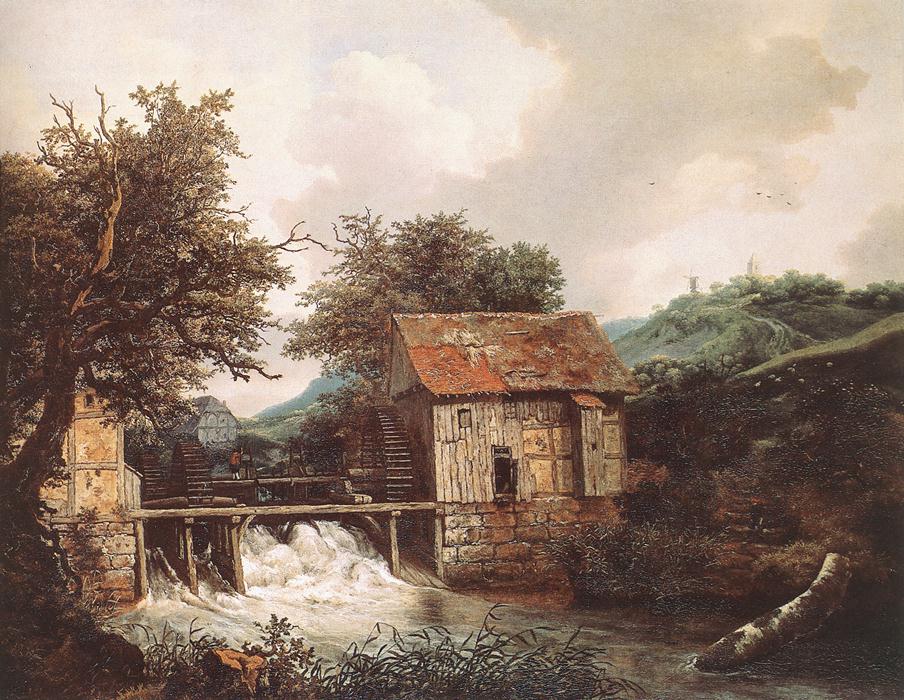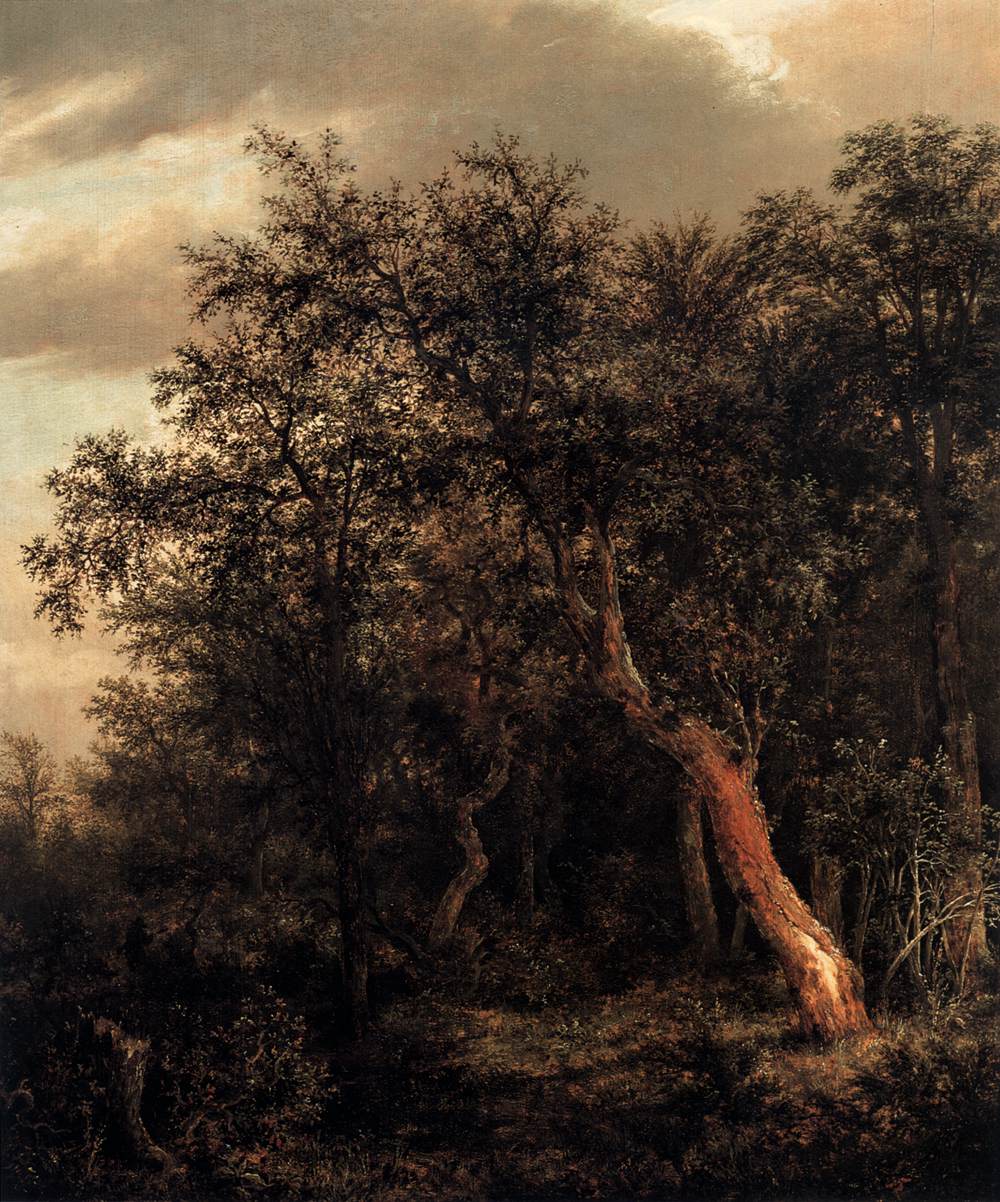Baroque artist, often considered the greatest Dutch landscape painter. He was probably the pupil of his father, the frame maker and artist Isaack de Goyer, who later called himself Ruysdael. None of Isaak's paintings have been identified with certainty, and it is impossible to determine the nature and extent of his influence on Ruisdael. Jacob was the nephew of the noted painter Salomon van Ruysdael (this distinction in spelling occurs consistently in their own signatures).
The influence of Cornelis Vroom, another Haarlem landscapist, is often noticeable in his early works of the 1640s. The earliest dated pictures are of 1646. Two years later Ruisdael became a member of the Guild of St Luke in Haarlem. From 1650 to 1653 he traveled extensively in the Netherlands and the neighbouring parts of western Germany. He travelled to the Dutch/German border with his friend Nicolaes Berchem in the early 1650s, and one of the pictures that resulted was the celebrated Bentheim Castle (1653, National Gallery of Ireland, Dublin), in which the castle heroically crowns the top of a steep, rugged hill, transformed by Ruisdael's imagination from the mild slope it is in actuality.
In about 1655 he settled in Amsterdam, of which he became a free citizen in 1659, and he lived there for the rest of his life (although he was buried in St Bavo's Cathedral in Haarlem). He evidently had a reasonably prosperous career, but little is known about his life and it was long thought he had died insane in the workhouse at Haarlem, a fate that is now known to have befallen his cousin and near-namesake Jacob van Ruysdael. There is still uncertainty, however, concerning the story, reported by Houbraken and supported by other tantalizing evidence, that Ruisdael practised as a surgeon. It seems unlikely that he could have found the time for this (he is said to have taken a medical degree at Caen in Normandy in 1676, when he was in his late 40s), but other prolific Dutch painters, for example Steen (who ran a tavern), managed to pursue two careers. Meindert Hobbema was his most famous pupil and follower.
Ruisdael's early work, such as the Landscape with a House in the Grove (c. 1646; The Hermitage, St. Petersburg), reflects his obsession with trees. Earlier Dutch artists use trees merely as decorative compositional devices, but Ruisdael makes them the subject of his paintings and imbues them with forceful personalities. His draftsmanship is meticulously precise and is enriched by thick impasto, which adds depth and character to the foliage and trunks of his trees. After 1650 the monumentality of his landscapes increases. In his view of Bentheim Castle the forms become more massive, the colours more vibrant, and the composition more concentrated. The latter quality is even more evident in his famous Jewish Cemetery (1655-60; Gemäldegalerie, Dresden), which is one of his most masterly compositions. All motifs of secondary importance serve as accessories to the main motif, three ruined tombs. The painting symbolizes the transience of temporal things.
After 1656 Ruisdael's compositions became more spacious and his palette became brighter. His paintings of waterfalls and his Marsh in the Woods (c. 1665; Hermitage, St. Petersburg), recall his earlier interest in forest scenes. But more often his late works, such as the Windmill at Wijk bij Duurstede (c. 1665; Rijksmuseum, Amsterdam), Wheatfields (c. 1670; Metropolitan Museum of Art, New York), and his numerous views of Haarlem display panoramas of the flat Dutch countryside. The horizon is invariably low and distant and dominated by a vast, clouded sky. Sometimes the small figures in his pictures were added by other artists, such as Adriaen van de Velde, Johannes Lingelbach, Philips Wouwerman, and Claes Berchem. He also produced several delicately finished etchings, one of the most famous of which is The Cornfield (Petit-Palais, Paris).
Ruisdael's influence was resounding, both on his Dutch contemporaries and on artists in other countries in the following two centuries — Gainsborough, Constable, and the Barbizon School for example. Examples of his work are in many public collections, the finest representation being in the National Gallery, London.
//
![]()









